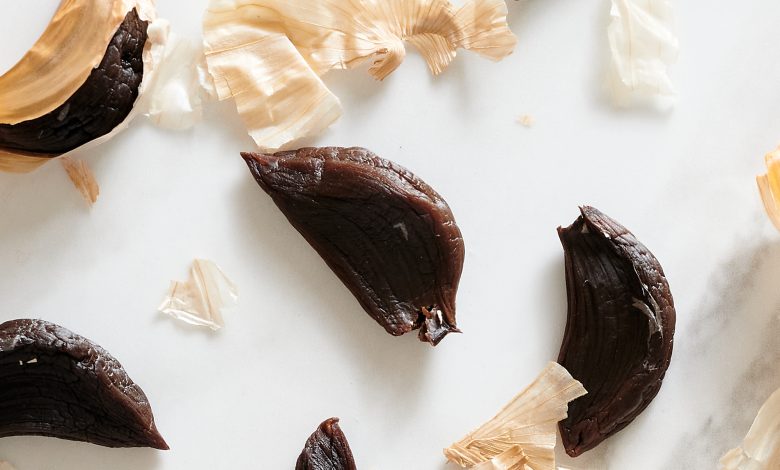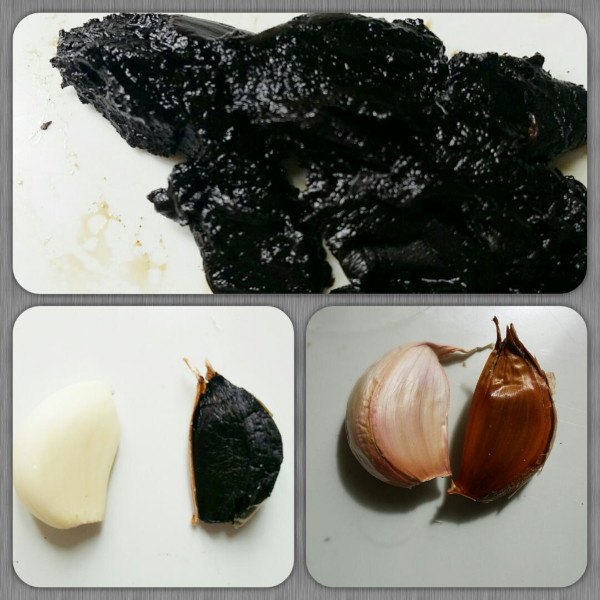How to Make Black Garlic at Home: Complete Guide with Photos

Hi Agrohuertas! Today I want to talk to you about black garlic. A new type of garlic, which is all the rage in kitchens lately. They originate from Japan and are widely consumed in Korea and the US. In Spain it has been known for a few years, and it already has multiple uses in our gastronomy. In addition to having very good properties for health.
Black garlic, contrary to what many people think, is not a new cultivar or variety of garlic; if not that is obtained through a long process of fermentation with low temperature, of the common garlic.

How to make homemade black garlic
To achieve this, follow these steps:
- It is necessary to start with one or several heads of common or purple garlic (depending on how many we want to obtain); which can be from your own garden or purchased, if you want to know how to grow garlic here we explain it to you. If you opt for this last option, it is best that the garlic is not excessively dry.
- Next, the first layer of skin must be removed, taking care that the teeth remain attached.
- Place the head of garlic in a completely airtight container with some moisture, such as a glass jar. Another option is to vacuum pack them.
- Black garlic needs to ferment at more than 40 degrees Celsius, so to do it at home, as Nuria explained in the comments:
You can use a yogurt maker, an electric rice cooker or any other appliance that can house heads of garlic inside at a constant temperature of between 40 and 50 degrees. A higher temperature speeds up the process, but can dry them out or burn them if the humidity is not controlled very well.
- Once this period has passed, it is removed and left to dry or “mature” for about 7 days.
- Now you would have your black garlic ready to consume.
Characteristics of black garlic
The most notable physical or external characteristics (as can be seen in the photo) of black garlic are:
- The smell, which is very pleasant fruity and similar to that of balsamic vinegar, which despite the fact that it has undergone a fermentation process does not smell of putrefaction.
- The texture is light, very tender and unctuous.
- Its flavor is intense, sweet and with a slight acid touch; reminds some people of licorice. It can be said that it has a somewhat balsamic flavor.
- The color turns to a pale brown.
- It considerably reduces the volume of the black garlic clove.

In the following images you can see the comparison of the black garlic clove with the common one, the color is what most attracts attention, in the image above you can see the unctuous texture.

Benefits and properties of black garlic
The properties of black garlic for health are numerous:
- It is low in fat.
- It has low salt content.
- It is a very good antioxidant, much more than common garlic.
- It has anticancer properties.
- They have positive effects in terms of reducing inflation and cardiovascular diseases.
- Reduces hypertension.
- It is diuretic.
- It has antiseptic properties.
- Increases collagen levels.
Possible adverse effects
At the moment there are not many that have been found, there are very few studies on the matter, which speak of the fact that it can interfere with certain anticoagulant drugs, but like everything else, it is convenient and always advisable to take it in moderation.
How to take black garlic?
It can be prepared in stews, spreading it over vegetables or meat to grill, or even as a salad dressing or eaten raw by spreading it on bread. Currently there are already many recipes in which this ingredient is included, especially oriental ones.
Advantages of making black garlic at home
The advantages of making your own black garlic are
- The economic savings, since currently the price in the store, per head of black garlic is approximately €2.
- It is very easy to do, it just takes time.
- It is a 100% organic food (if it comes from organic garlic) and natural, without additives.
- You can surprise your friends or guests with new recipes or snacks.
I hope you are encouraged to do so and that you enjoy it.
References
- Toledano Medina, M. Á. (2017). Optimization of the production process and physiological and physical-chemical characterization of black garlic.
- Calderon Perez, RA (2015). Evaluation of the process of obtaining black garlic from different varieties of Allium Sativum (GARLIC).
- Cavallito, CJ, & Bailey, JH (1944). Allicin, the Antibacterial Principle of Allium sativum. I. Isolation, Physical Properties and Antibacterial Action. Journal of the American Chemical Society, 66(11), 1950–1951.
- Lee, K.-C., Teng, C.-C., Shen, C.-H., Huang, W.-S., Lu, C.-C., Kuo, H.-C., & Tung, S.-Y. (2018). Protective effect of black garlic extracts on tert-Butyl hydroperoxide-induced injury in hepatocytes via a c-Jun N-terminal kinase-dependent mechanism. Experimental and Therapeutic Medicine, 15(3), 2468–2474.
- Sun, Y.-E., & Wang, W. (2018). Changes in nutritional and bio-functional compounds and antioxidant capacity during black garlic processing. Journal of Food Science and Technology, 55(2), 479–488.
- Garlic and Cancer Prevention. National Cancer Institute



![Photo of Wireworm: [Characteristics, Detection, Effects and Treatment]](https://www.complete-gardening.com/wp-content/uploads/2022/08/wireworm-characteristics-detection-effects-and-treatment-390x220.png)
